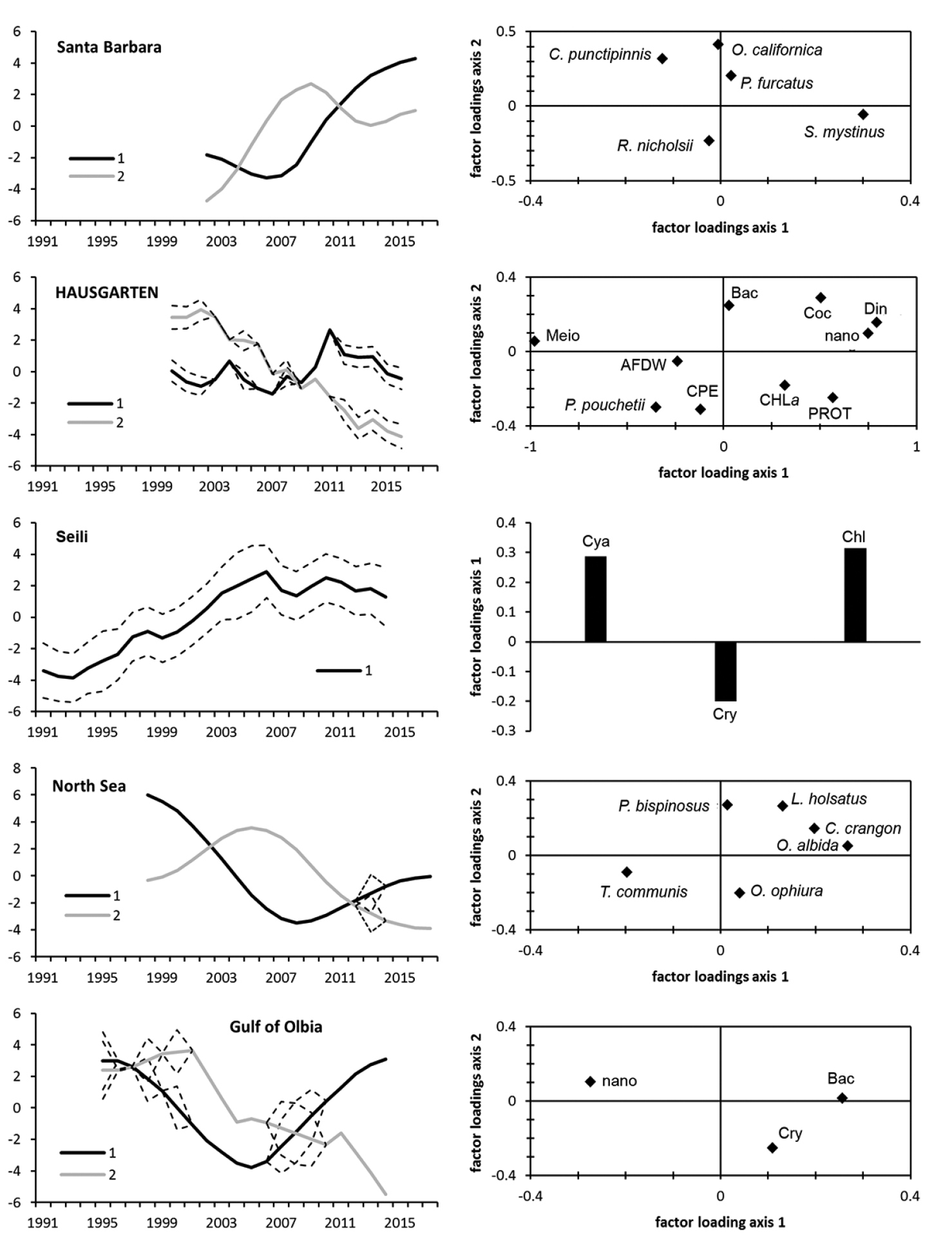
|
||
|
Common trends (left) and corresponding factor loadings (right) for the five LTER sites obtained by means of DFA. Only factor loadings above the cut-off of 0.2 in absolute value are shown. Common trends and factor loadings are untitled. Dashed line in graphs indicates the confidence interval of the DFA model. Bac = Bacillariophyceae, Chl = Chlorophyceae/Chlorophyta, Coc = Coccolithophyceae, Cry = Cryptophyceae, Cya = Cyanophyceae, Din = Dinophyceae, nano = nanoplankton/nanoflagellates, Ppou = Phaecystis pouchetii, CHLa = chlorophyll a, AFDW = organic matter in the sediments as ash-free dry weight, CPE = sediment-bound chloroplastic pigments, PROT = particulate proteins in the sediments, Meio = meiofauna. |